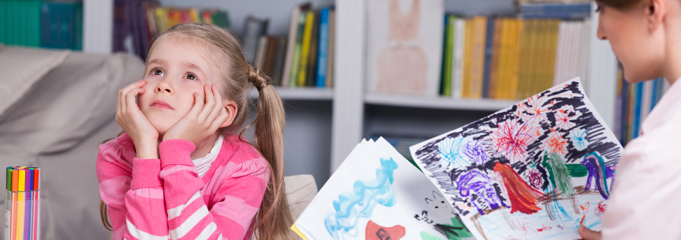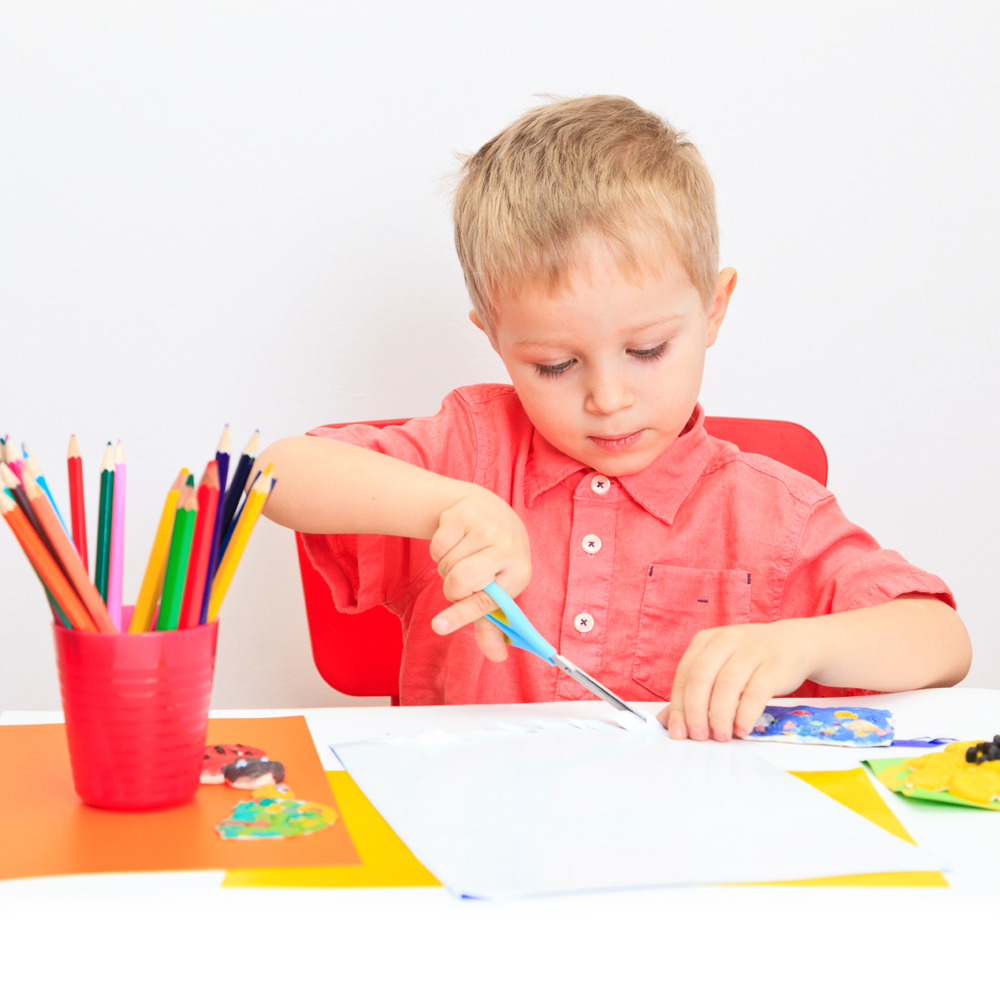
Applying the theory – two strategies for working with children and young people, suggested by students of our Graduate Certificate in Developmental Trauma

This article was authored by Marina Dickson,
Program Manager, Vocational Training and Education at the Australian Childhood Foundation.
When delivering training, one of the constant learning objectives identified by participants is ‘we want strategies for working with children and young people who have experienced trauma’ or to put it as one participant did, ‘strategies, strategies, strategies’.
The thing about trauma focused strategies though is that they don’t look very different from a range of strategies used by a range of professionals and carers who work with and support children and young people. So much of the focus of our intervention is on relationship and play and, as many of us know, those two things can be achieved with a ball or a bucket and spade.
The difference in their use in trauma focused intervention is the intent behind, and understanding of, the use of a particular strategy and this is the focus of one of the assessment tasks in the Graduate Certificate in Developmental Trauma.
The following two strategies come from the work of professionals who completed the course in 2014 and demonstrate the depth that stems from what can seem like the simplest intervention strategy. The analysis questions asked of each strategy are included at the end of the document.
1. Strategy: Body Scan
Written by Tamara Dixon, Acting Team Leader, Bayswater, Knox Integrated Family Services, Anglicare (VIC)
Description
Ask the child to draw a picture of the outline of their body, or trace around the child’s body on a large sheet of butchers paper.
Then ask the child to think about how their body feels at that time, or remembering back to a time when they were sad, angry, frightened and so on. Once the child has thought about an experience or a feeling, ask the child to draw what they can feel in their bodies and where they can feel it. The adult may like to draw their own body outline, which may allow the child to feel more comfortable in participating and sharing.
After the body scan is complete, ask the child questions about what they have drawn, and where they feel the pain in their bodies. Then ask the child if there are things that they do which help the pain to go away or lessen.
If the child cannot label any of their own strategies for coping, help them by coming up with some things they could do, or things that the adult has done when they have felt the same way.
Strengths
I have used this strategy with children who have found it difficult to talk or prefer to express themselves creatively. It is also a good strategy for initial engagement with a child, when there is no or minimal rapport built. This strategy allows the child to draw how they are feeling and visually express the pain caused by the traumatic experience. Usually, after the picture has been drawn and the adult has sat silently with the child allowing them the time to draw what they are feeling, children will share with the adult what they have drawn and how it feels in their body when they are ‘sad, hurt, angry, frightened and so on.
This activity assists children to talk about how they are feeling, and understand the impacts on their body. This activity also provides ways to identify when they are feeling uncomfortable, sad, angry etc and why and to offer them strategies to manage the pain or discomfort they are experiencing.
When using this activity for assessment purposes, it is useful to note the child’s ability to label and express emotions. It can also be helpful to talk about the child’s support network and family, and note the ways they may feel when surrounded by different people. This can assist in assessing who the child views as a ‘safe’ person. Any delays or difficulties in these areas could be an identifying factor in assessing when the developmental trauma occurred, which can then indicate other activities which would be beneficial for the child.
For intervention, this activity could be used to record the changes in the child’s body scan over time, in terms of where they experience feelings and how these feelings are experienced. It can also lead to discussions on strategies which may help to ease the pain.
Weaknesses/Considerations
This activity may bring up distressing memories for children and so therefore the adult needs to monitor the child’s responses and ensure that the appropriate steps are taken to ensure the child feels safe, and that the activity is stopped if necessary. For this reason, depending on the child’s temperament and any current experiences of trauma it may not always be helpful to use this activity in a group setting.
*Editorial Note: In training we are often asked about using Body Scan activities with children who have been abused. As we would in training sessions we wish to raise a caution around ‘tracing’ the child’s body – especially when working with children whose boundaries have not been respected, and also where tracing them requires them to physically lie down while an adult hovers over or around them.
If this is the case in your work, you may like to consider using a generic body outline shape drawn or printed paper, a parent or trusted adult to do the outlining, or tracing the child while standing up against a wall or chalkboard. Always consider how the child might interpret the scenario and prioritise their felt sense of safety.
2. Strategy: Using mindfulness techniques such as breath work
Written by Zoe Sharman, (NSW)
Description
Mindfulness is a way of being present in the current moment, and can include using breathing techniques. These have traditionally been used in meditation, and have been shown to reduce anxiety, and assist people to feel grounded.
Children who experience trauma are frequently either hyper or hypo aroused. This technique may be particularly useful for children who are hyper-aroused, as it will enable them to experience a state of calm. For children who are hypo aroused, it may also be quite grounding, and may assist to put them back in touch with their bodies. It is also possibly a useful technique when children are processing trauma, as it may assist them to feel calm, and therefore remain within their window of tolerance whilst processing painful memories. This will enable children to understand that they may not always be overwhelmed by the difficulty of these memories and experiences.
Strengths
I think that this is a very valuable strategy, which does not require any special tools or equipment to practice. It is also a strategy that could be used in both assessment and intervention phases of the work. Mindful breathing is something that needs to be practiced on a regular basis, meaning that it is unlikely to be a strategy that is used as a “one-off” intervention. It could be a technique that could be introduced to the child during the assessment phase, but continue to be used throughout the work.
 There are a number of different ways of demonstrating mindful breathing eg putting a teddy bear on a child’s tummy, and inviting them to “rock teddy to sleep” or using feathers or bubbles to demonstrate the out-breath. Using these different types of techniques may mean that children are less likely to get bored with this exercise.
There are a number of different ways of demonstrating mindful breathing eg putting a teddy bear on a child’s tummy, and inviting them to “rock teddy to sleep” or using feathers or bubbles to demonstrate the out-breath. Using these different types of techniques may mean that children are less likely to get bored with this exercise.
*Editorial Note: You can see a few examples of using mindfulness techniques with children – including a video of ‘rocking the monkeys to sleep’ in Susan Kaiser-Greenland’s work on the MindfulnessTogether youtube channel.
Weaknesses/Considerations
I would use this strategy in my work, particularly as it is one which uses something as simple as breathing, which every human being is instinctively engaged with. The only time when I may not use it is if someone is extremely distressed and hyper-aroused or perhaps hyperventilating, as in this instance, it may be too difficult for them to move from such a distressed state to a calm state without an intermediate step, such as some of the techniques which are helpful for grounding. I have also had personal experience in meditation groups, of people who find this technique (which is often suggested to be extremely simple) to be difficult to master, and therefore they do not find it comforting. If I was working with a person who felt like this, I would not continue to suggest that mindful breathing may be something that they would find helpful, but would find other ways to attempt to assist them to regulate their emotional state.
I cannot see any particular ethical dilemmas associated with using this technique. However, there may be a challenge in introducing the idea to children, as current social norms do not include children participating in this type of activity. A very active child may struggle to sit still and focus on their breath in the required way. I am aware that there are a number of strategies that are available to assist children with a variety of mindfulness exercises, such as Goldie Hawn’s program, and cards such as the Yoga Pretzels, so it may be that some of the social understanding of this strategy is beginning to change.
Questions to consider
The following questions lead the strategy analysis as included above. These may be of value in your exploration of strategies you utilise in your practice- or as a way of explaining your work to others.
- Have you previously used this strategy or a variation in your own work? How?
- Why have you previously used this strategy or why would you use this strategy in working with traumatised children or young people ie: what is/would be the intervention goal in using this strategy?
- How do you link this strategy to what you know about the impacts of trauma and trauma processing or recovery for children?
- Is there a difference between using this strategy during assessment and intervention?
- In your own work, when are times when you could (or would not) use this strategy?
- Overall, what do you see as useful or valuable about this strategy?
- How might you know that this strategy was working toward achieving the intervention goal (as outlined in question 2)?
- What might be the challenges of using this strategy- specifically consider any ethical issues that emerge or whether using this strategy is utilized in a child centred way?
>Take me to the Prosody home page for more blog entries!
